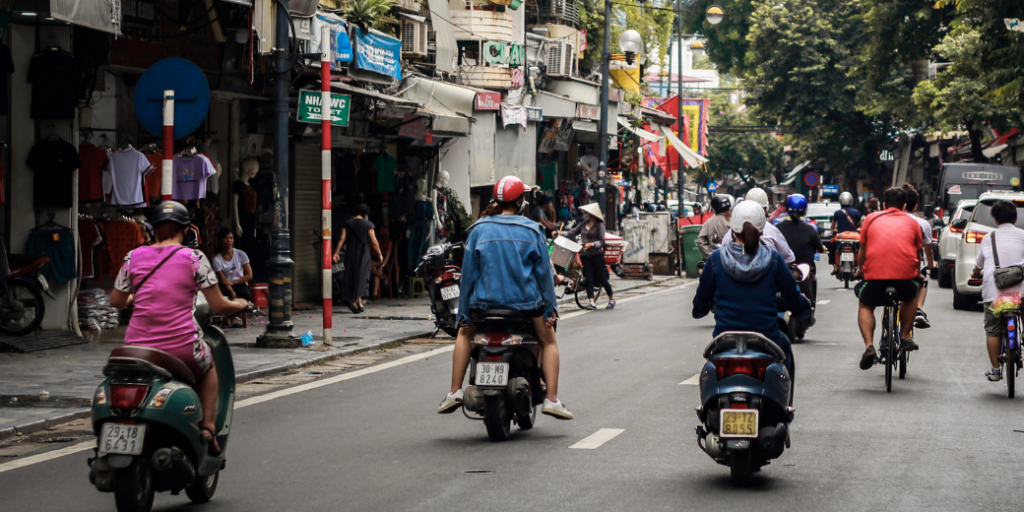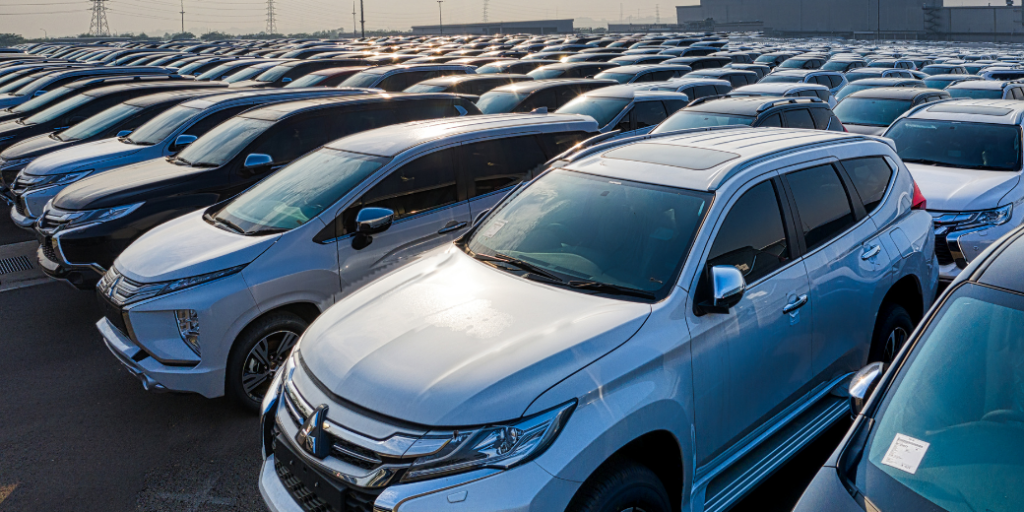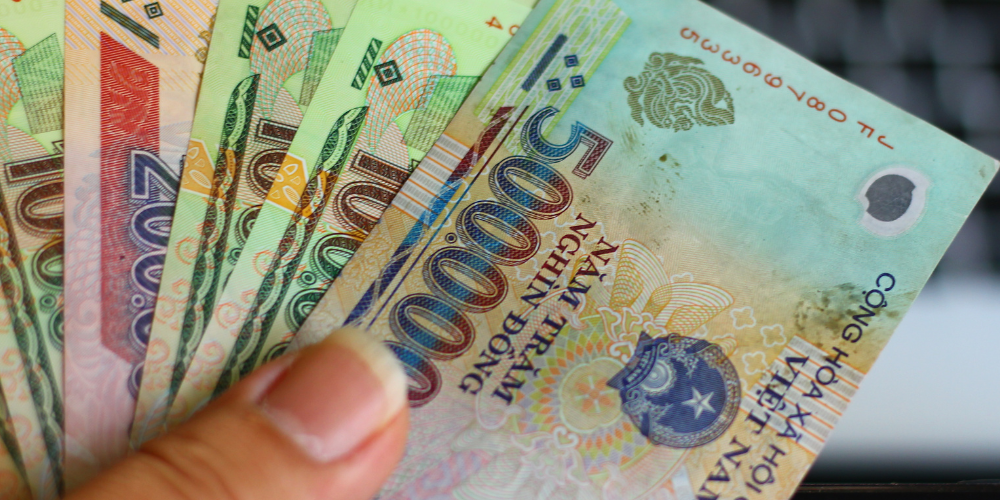Industry Reports
Navigating Southeast Asia’s Fast-Changing Retail Scene

Summary
Southeast Asia’s retail market is booming post-pandemic, led by Gen Z, rising incomes, and e-commerce. Discover key trends shaping SEA retail.
SEA Retail Market Grows Amid Demographic Tailwinds
| Retail Growth Outpaces Mature Markets in Post-Pandemic SEA
Southeast Asia (SEA) is entering a high-growth phase in its retail development, driven by rising middle-class income, youthful demographics, and surging household consumption. With a projected CAGR of 5% between 2025 and 2033, SEA’s retail growth outpaces mature economies like the US (2%) and Japan (1%), while remaining behind India’s exceptional 13%. Thailand and Indonesia have led the post-pandemic retail rebound, showing consistent year-on-year gains in retail trade across consumer categories.
The structural shift is largely underpinned by macroeconomic forces. As of May 2025, ASEAN’s population has reached 700 million, with projections suggesting that 70% of this cohort will enter middle-income status by 2030. This transformation could swell the region’s consumer market to USD 4 trillion. These trends are not only boosting sales volume but also raising expectations around convenience, value, and experience—factors that retailers must swiftly adapt to in order to thrive.
| Indonesia and the Philippines Lead in Gen Z-Driven Demand
Indonesia and the Philippines emerge as consumption-driven growth hubs, bolstered by robust household expenditure and youthful, highly digital populations. Indonesia’s household consumption hit USD 659 billion in 2023—accounting for over half of its GDP. Similarly, the Philippines displays strong retail momentum backed by consumer spending and an energetic Gen Z base.
What sets these markets apart is the prevalence of social-led discovery and purchase behaviours. Around 21% of Gen Z users in SEA interact with social commerce platforms multiple times per week, far exceeding Millennials (14%) and Gen X (4%). In Indonesia alone, 63% of internet users actively use social media for product research, underscoring the need for brands to integrate platforms like TikTok and Instagram into their e-commerce funnels.
Source: IMARC | HSBC Bank Malaysia | Technavio | Mordor Intelligence | Supermom Business
E-Commerce Is Redefining Retail Priorities
| F&B Outperforms All in E-Commerce Growth
Food and beverage (F&B) is the fastest-growing e-commerce category in SEA, excluding Singapore. It is expected to expand at over 30% CAGR from 2021 to 2025—outpacing beauty, apparel, and consumer electronics. This acceleration is attributed to platforms like GrabFood and ShopeeFood that combine convenience, discount-led pricing, and “shoppertainment” strategies, including group ordering and in-app entertainment.
Vietnam in particular has emerged as a leader in food delivery adoption, contributing significantly to regional growth. The implications are twofold: logistics players must adapt to higher frequency, lower-margin deliveries, and F&B brands must increasingly compete on service quality and platform partnerships.
| Small-Format Grocery Chains Disrupt Traditional Retail
Mini markets and convenience stores are becoming the dominant retail format in SEA, surpassing traditional supermarkets and hypermarkets. Key drivers include rapid urbanisation, limited availability of large retail space, and the consumer desire for frequent, low-commitment purchases. In Indonesia, Indomaret and Alfamart are market leaders, while in Thailand, 7-Eleven and Lotus’s Go Fresh have taken the lead.
What makes this trend particularly disruptive is the competitive pricing strategy adopted by these formats. In some cases, they can offer products at up to 30% lower prices than larger supermarkets. This transformation in grocery retail is not just about scale, but also about local accessibility and agility—critical features in dense, infrastructure-constrained cities.
Source: McKinsey & Company | VN Express
Tech and Channel Integration Shape Customer Experience
| Omni-Channel Retail Unlocks Sales Potential
The omni-channel approach—seamlessly blending physical and digital shopping experiences—has become indispensable in SEA. Central Retail Corporation (CRC) in Thailand exemplifies this strategy, with omni-channel sales accounting for 20% of total revenue in 2024, reflecting a 10% YoY increase. The company’s pivot post-COVID to a digital-first strategy helped it nearly return to pre-pandemic sales levels.
Despite the digital shift, physical stores still command loyalty in several SEA markets, particularly in Vietnam and Singapore. However, mobile commerce is rapidly gaining ground, especially in Vietnam and Thailand, facilitated by lower fulfilment costs and growing digital maturity. This hybrid model reflects evolving consumer preferences, where discovery may occur online, but the final purchase could be in-store or vice versa.
| Immersive Tech Elevates Customer Experience Across SEA
Retailers in SEA are embracing immersive technologies—such as virtual reality (VR), augmented reality (AR), and generative AI—to redefine how consumers engage with products and brands. Thailand’s Central Retail Corporation has pioneered the world’s first immersive retail platform through its C-Verse app, integrating online shopping, social media, livestreaming, and augmented features. The platform includes AI-driven avatars and interactive 3D displays, offering a gamified and personalised shopping journey.
Vietnam’s VR360 launched the country’s first VR mall, vrMall, enabling brands to replicate real-life stores in digital environments. Meanwhile, Indonesia’s Pasarina supermarket introduced a metaverse app that transforms in-store shopping into an interactive treasure hunt, leveraging AR to display hidden promotions and educational visuals. These innovations signify a broader regional push to enhance customer experience and engagement without depending solely on physical presence.
| Live and Video Commerce Reshape Consumer Behaviour
SEA has emerged as a global frontrunner in video-based e-commerce. By 2024, live-stream shopping events accounted for 20% of the region’s e-commerce activity, up from just under 5% in 2020. This surge is driven by mobile-first habits, widespread use of streaming apps, and the blurring lines between entertainment and shopping.
To navigate regulatory constraints, TikTok acquired a majority stake in Tokopedia in early 2024, allowing it to resume operations in Indonesia through a compliant e-commerce model. In parallel, YouTube and Shopee have partnered to launch shopping features across Indonesia, Thailand, and Vietnam. These integrations reflect the rising importance of live commerce as a mainstream retail channel—particularly among Gen Z consumers who value authenticity, speed, and interactivity.
Source: CRC – Company Profile and Annual Report | Kaohoon International | Voice of ASEAN | The Jakarta Post
Tech and Channel Integration Shape Customer Experience
| Global Brands Localise to Win Consumer Loyalty
International brands are increasingly tailoring their offerings to meet SEA’s diverse cultural and lifestyle preferences. Japanese retailers, for instance, have adapted products like raincoats for Vietnam’s motorbike-heavy urban mobility, while Korean brands have introduced halal-certified, vegan beauty lines in Malaysia to cater to the Muslim market.
The UTme! app by Uniqlo in Thailand allows users to design personalised T-shirts, tapping into the Thai market’s preference for individuality and experiential retail. Meanwhile, Mixue in Indonesia and Sulwhasoo in Thailand leverage regionally tailored product lines and local celebrity endorsements to boost resonance. These examples underscore a broader trend: localisation is no longer optional—it’s a competitive imperative in SEA’s heterogeneous markets.
| Influencer Marketing and Premium Retail Gain Traction
As GDP per capita (PPP) surpasses USD 10,000 across much of the region, SEA’s expanding middle class is showing greater willingness to spend on premium products. Global brands are doubling down on influencer-led marketing strategies and flagship retail spaces to tap into this shift.
Prominent influencers such as Win Metawin in Thailand, Bretman Rock in the Philippines, and Heart Evangelista have been enlisted by luxury brands like Prada, Cécred, and Mugler, respectively, to drive aspirational appeal. In tandem, malls like Iconsiam (Bangkok) and Pavilion (Kuala Lumpur) offer curated, high-end environments that blend shopping with lifestyle experiences, catering to affluent locals and tourists alike.
Source: Vietnam Briefing | Prap Points Group | Supermom | Talkwalker | Jakarta Globe | Antara News
Investment and Expansion Trends Signal Long-Term Bet on SEA
| Asian Investors Drive Retail Expansion in SEA
Foreign direct investment (FDI) into ASEAN’s wholesale and retail sector reached USD 33 billion in 2022—nearly double the total from 2013. Japan and China are leading the charge. JETRO’s 2024 survey found that 100% of Japanese retail and food service firms in Vietnam plan to expand operations in the short term, attracted by the market’s economic stability and consumer potential.
Chinese platforms are also aggressively expanding: Temu entered the Philippines and Malaysia in 2023, then Thailand in 2024; TikTok Shop has been operating in the region since 2021. This influx of investment reflects SEA’s growing stature as a strategic retail battleground, driven by a young consumer base and digital-first behaviours.
| Platform Partnerships Drive Profitability for Retailers
Selling through SEA’s leading marketplaces—like Shopee and Lazada—offers significant margin advantages. Brands using these platforms typically enjoy post-return operating margins of 10–15%, thanks to streamlined logistics, efficient return handling, and platform-driven marketing. In contrast, direct-to-consumer sellers or brands bypassing local marketplaces often report slim or even negative margins due to higher shipping and return costs.
Japanese firms, in particular, benefit from integrated service providers such as AnyMind Group, transcosmos, and Ezbuy, which offer support from business registration and warehousing to digital marketing. For instance, Sony’s collaboration with transcosmos in 2024 led to a 130% sales target achievement within three months, demonstrating the potential of full-stack e-commerce enablement.
Infrastructure and Cost Pressures Weigh on Retail Growth
| Last-Mile Logistics and Shipping Costs Remain Key Bottlenecks
While digital retail adoption is accelerating, logistics challenges persist—particularly in archipelagic and infrastructure-limited countries like Indonesia and the Philippines. Fragmented last-mile networks, poor road conditions, and maritime reliance result in delivery delays and higher costs. This has tangible impacts: 54% of SEA consumers abandon their online carts due to high shipping costs, while 35% cite long delivery times.
Platforms like Lazada and Shopee are tackling this by investing in proprietary logistics networks. Lazada, for example, boasts 40 fulfilment centres and a fully owned warehouse system, offering sellers better delivery assurance. In contrast, Tokopedia and TikTok Shop rely on third-party logistics providers, which may struggle with consistency and scalability in more complex markets.
| Rising Retail Rents Restrict Physical Expansion
Retailers face mounting challenges in physical store expansion due to limited availability of prime retail space and escalating rents. In countries like Vietnam, infrastructure development outside major cities remains sluggish, constraining retailers’ ability to reach broader markets. Even where demand is strong, rising lease costs—especially in Singapore and Ho Chi Minh City—put downward pressure on profitability.
Market conditions vary: Kuala Lumpur presents a tenant-friendly environment as it nears the bottom of its rental cycle, while cities like Bangkok, Jakarta, and Manila are entering early stages of rental recovery. This variation necessitates a strategic, market-by-market approach to physical expansion, with hybrid models becoming increasingly vital.
Source: East Spring | Cube Asia | Parcel Monitor | CedCommerce
| Uncover Southeast Asia’s Retail Opportunities with Speeda
From Gen Z-driven consumption trends to platform-led profitability strategies, Southeast Asia’s retail landscape is evolving at breakneck speed. To stay ahead, you need more than surface-level insights.
Speeda empowers investment banking professionals, private equity firms, and M&A specialists with access to over 11 million company profiles, detailed M&A deal data, more than 3,000 in-house industry reports, expert network services, and real-time macro and market intelligence—all in one integrated platform.
Sign up for a demo to understand how Speeda can accelerate your research, enhance deal sourcing, and support confident investment decisions across Southeast Asia’s dynamic markets.

























